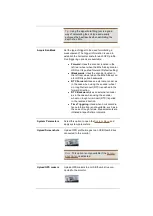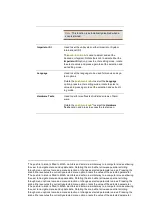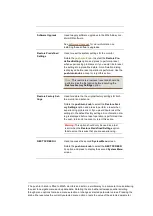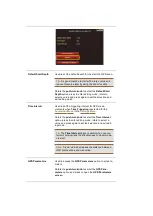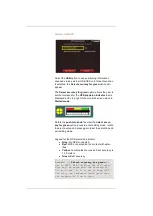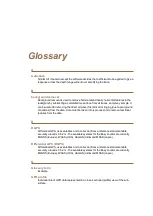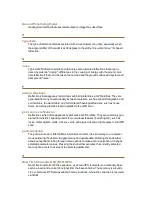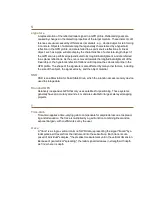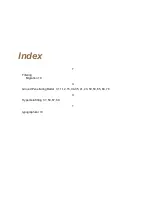
Ground Penetrating Radar
Geophysical method that uses radar pulses to image the subsurface
H
hyperbola
The type of reflection often associated with a round object or a utility, especially when
the angle (profile) of the radar is at 90 degrees to the utility. It is a distinctive “n” shaped
reflection.
N
noise
Typical GPR reflection profiles contain noise and unwanted reflections that are pro-
duced by antenna "ringing", differences in the coupling of energy with the ground, mul-
tiple reflections that occur between the antenna and the ground surface and system and
background "noise".
P
planar reflections
Reflections that appear as horizontal or sub-horizontal lines in GPR profiles. They are
generated from any lineal boundary between materials, such as buried stratigraphic and
soil horizons, the water table, and horizontal archaeological features, such as house
floors, as well as pipelines that are parallel to the GPR scan.
point source reflections
Reflections which often appear as hyperbolas in GPR profiles. They are commonly gen-
erated from distinct, spatially-restricted, non-planar features (‘point targets’), such as
rocks, metal objects, walls, tunnels, voids, and pipes crossed at right angles to the GPR
scan.
push-turn knob
The push-turn knob is fitted to MALÅ monitors and acts in a similar way to a computer
mouse allowing the user to navigate menus and update data. Rotating the knob either
allows sequential scrolling through menu options to make a menu selection or changes
selected parameter values. Pressing the knob either executes the currently selected
menu option or sets the value of the selected parameter.
R
Real Time Kinematic GPS (RTK GPS)
Real Time Kinematic GPS is expensive, uses two GPS receivers (one stationary base
and one rover) and a correction signal from the base antenna. The accuracy is around ±
1-2 cm. Network RTK also available in many locations, where the correction is received
via GSM.


